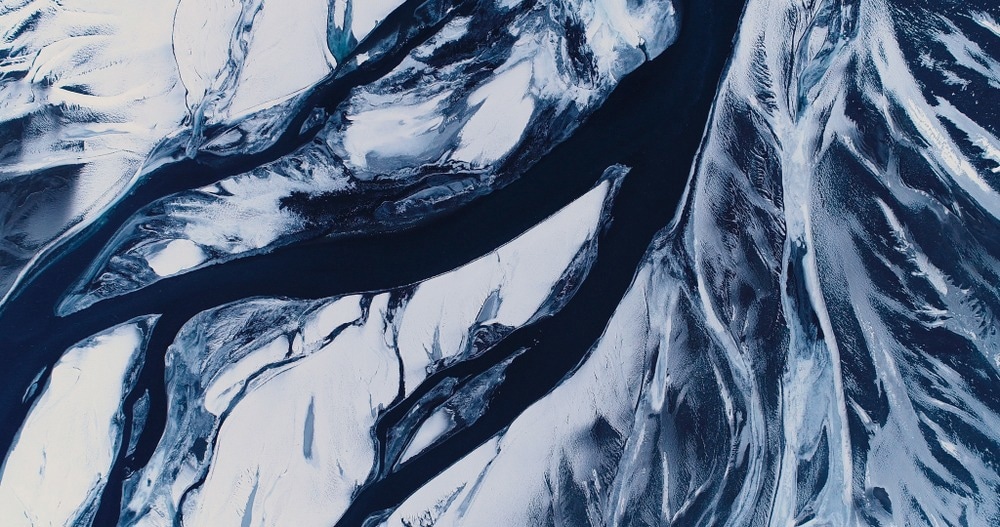LiDAR is probably best known for its use in self-driving cars, where LiDAR is used as a form of ‘machine vision’ for object recognition and collision avoidance.1 LiDAR and radar systems are often complementary for self-driving vehicles as LiDAR typically has higher angular resolution due to the shorter wavelengths used, but radar has a more consistent performance in challenging weather conditions.2
For mapping and surveying, LiDAR has become a key tool as by recording the received data by the LiDAR sensor, a point cloud map can be reconstructed.3 Here, the high angular resolution of LiDAR is particularly advantageous as it improves the resolution of the 3D reconstructions that can be obtained and the level of detail in the maps.
3D Maps in LiDAR
Recording a point map involves using the LiDAR laser to scan and recover reflection timing data for a series of thousands of points over an object. By scanning in the XY plane over an object, the recovered time-of-flight information provides the third Z dimension for the total 3D reconstruction.
The simplest iteration of a LiDAR set-up consists of a light source, normally a laser, and a time-of-flight detector. For mapping and surveying, the LiDAR equipment is normally mounted on an unmanned aerial vehicle (UAV).4 The position of the UAV is recorded via GPS or another positioning method and provides the XY information, while the LiDAR provides the Z dimension. Depending on the terrain to be surveyed, it is also possible to use terrestrial vehicles for the surveying as well.
Overall, aerial LIDAR for mapping and surveying is a very effective technique as it can provide 3D information, which standard aerial photography cannot, which is accurate for a variety of terrain types.4 Some terrain types and features, such as forests, can still prove challenging as the LiDAR cannot penetrate dense canopies. Still, the use of UAVs means it is possible to take data in a variety of places, including below the tree line and to make more frequent measurements than with airborne methods due to the prohibitive costs.5
One of the main advantages of LiDAR for mapping and surveying in combination with unmanned vehicles is the ability to make measurements in hard-to-access, dangerous or remote terrain. With drone-based systems now becoming highly affordable, remote mapping and surveying are becoming part of many industries’ maintenance routines.

Image Credit: Fly_and_Dive/Shutterstock.com
Remote Mapping
For environmental monitoring, remote mapping with LiDAR is being used for monitoring cryospheres, such as glaciers and permafrost.6 As well as mounting LiDAR devices on UAVs, manned airborne LiDAR and space-borne LiDAR are often used in combination to provide complementary information. Space-borne LiDAR has the best field-of-view, but there are significant costs associated with such systems and so only a limited number of devices to date.7
A global LiDAR space network could provide continual coverage and mapping of the Earth, but one of the greatest challenges for building such a network is the amount of energy required for the laser systems that are used as the LiDAR light sources.7 Due to the much larger distances required for the laser transmission and the presence of attenuating atmospheres, the pulse energy of the laser needs to be significantly greater, which is problematic for space applications where the satellite does not have an external power source.
Terrestrial or aerial LiDAR sensing devices can also achieve much greater spatial coverage than is possible with space-based systems. As well as mapping and surveying landscapes and terrain, remote LiDAR is also being used for maintenance applications.
For example, LiDAR can be used for remote infrastructure such as dams, oil rigs and power lines to ensure the infrastructure remains structurally sound or to help diagnose faults remotely.8 Often, these pieces of infrastructure are in remote areas where it is very expensive to send manned teams, so the ability to use LiDAR with UAVs is an attractive option for cost savings and to allow for more frequent maintenance inspections.
Future Outlook
Improvements in LiDAR systems will include greater energy efficiency, making remote applications and longer remote operation times possible.8 Improved accuracy and resolution will be particularly important for maintenance applications and generating improved quality terrain maps.
Some of the fastest growing areas in LiDAR mapping and surveying are expected to be climate monitoring, both for oceans, forests and land areas, and to support atmospheric research laboratories by providing data on environmental processes in different regions.8 Upgrading LiDAR to multibeam experiments or equipping UAVs with multiple sensor types will also further enhance the quality and variety of information that can be obtained from such studies.
References and Further Reading
Shreyas, V., et al. (2020). Self-driving cars: An overview of various autonomous driving systems. Advances in Data and Information Sciences: Proceedings of ICDIS 2019, pp. 361-371. doi.org/10.1007/978-981-15-0694-9_34
Bilik, I. (2023). Comparative Analysis of Radar and Lidar Technologies for Automotive Applications. IEEE Intelligent Transportation Systems Magazine, 15(1), pp. 244–269. doi.org/10.1109/MITS.2022.3162886
Puente, I., et al. (2013). Review of mobile mapping and surveying technologies. Measurement: Journal of the International Measurement Confederation, 46(7), pp. 2127–2145. doi.org/10.1016/j.measurement.2013.03.006
Khanal, M., et al. (2020). Accuracy comparison of aerial lidar,mobile-terrestrial lidar, and UAV photogrammetric capture data elevations over different terrain types. Infrastructures, 5(8). doi.org/10.3390/INFRASTRUCTURES5080065
Kellner, J. R., et al. (2019). New Opportunities for Forest Remote Sensing Through Ultra-High-Density Drone Lidar. Surveys in Geophysics, 40(4), pp. 959–977. doi.org/10.1007/s10712-019-09529-9
Bhardwaj, A., et al. (2016). LiDAR remote sensing of the cryosphere: Present applications and future prospects. Remote Sensing of Environment, 177, pp. 125–143. doi.org/10.1016/j.rse.2016.02.031
Hancock, S., et al. (2021). Requirements for a global lidar system: spaceborne lidar with wall-to-wall coverage. Royal Society Open Science, 8(12). doi.org/10.1098/rsos.211166
Wang, Z. & Menenti, M. (2021). Challenges and Opportunities in Lidar Remote Sensing. Frontiers in Remote Sensing, 2(March), pp. 1–8. doi.org/10.3389/frsen.2021.641723
Disclaimer: The views expressed here are those of the author expressed in their private capacity and do not necessarily represent the views of AZoM.com Limited T/A AZoNetwork the owner and operator of this website. This disclaimer forms part of the Terms and conditions of use of this website.